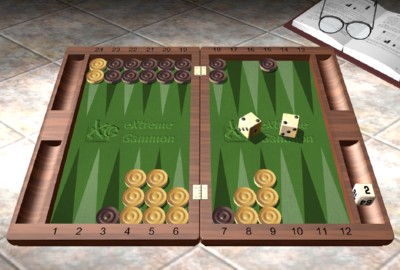Cash game. White owns the cube. White on move.

White to play 2-2.
This problem is an example of a somewhat rare breed, a true prime against prime game. Although we talk about priming games a lot, real priming battle don’t arise all that often. Much more common are positions where one side has a prime and the other just a loose connection of points, or games where one side has a prime but the other is conducting a strong attack.
In genuine priming games, you have two ways to win: either escape the other guy’s prime before he escapes yours, or force him to crack. Once your opponent makes a full 6-prime, as here, you’re down to just one plan: make him crack.
In order to make Black crack, White is going to have to build a 5-prime and then arrange to spend some R&R time on the bar while Black tries to escape. In light of this plan, we can assess the choices as follows:
9/7*/3* 5/3. Making the 3-point is the beginner’s play. White doesn’t build a prime and puts Black on the bar, thus ensuring that Black keeps his prime for some time.
9/7*(3) 5/3* and 9/7*(3) 4/2. White is on the right track with these plays, both of which are pretty reasonable. White makes a prime and dumps a checker in his board, hoping to get hit. If he gets hit, he’s in reasonable shape, and he might be able to stay on the bar long enough for Black to break.
9/7*(2) 5/3* 4/2! White makes his prime and goes for the double-dump, leaving two checkers to be hit. Compared to the single-dump plays, White increases his winning chances by 4%-5%, but also increases his chances of being gammoned by about the same amount. Since new wins are worth twice the value of new gammons lost, it’s the right play, but by a narrow margin.
The double-dump play looks ingenious, but it won’t always be the right play. You need to check and make sure your opponent is indeed on the verge of cracking. That’s the case here as Black’s outside checker gives him only about one extra roll of timing. If Black had more time, the double-dump wouldn’t gain enough wins to make up for extra gammons lost.





